The West Bank of the Nile, January 2002
Luxor lies on the east bank of the Nile. Opposite it,
in the desert beyond the strip of land that is irrigated,
are the temples and monuments to the dead. Beyond that,
further into the desert, are the Valley of the Kings and
the Valley of the Queens, where the tombs of the Pharoahs
were concealed.
Part of the Valley of the Kings, near Luxor,
seen from the narrow cleft leading to the tomb
of Tuthmosis III.
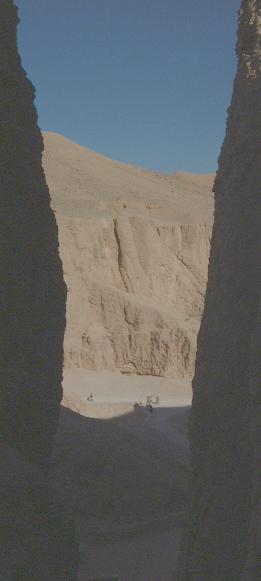
It's possible to walk up the ridge separating the Valley of the
Kings from the main part of the Nile valley, which brings one to
the top of this ridge above the Temple of Hatshepsut. In January,
this was a pleasant hike; I wouldn't recommend it when the weather
warms up, though - the trail is fairly steep.
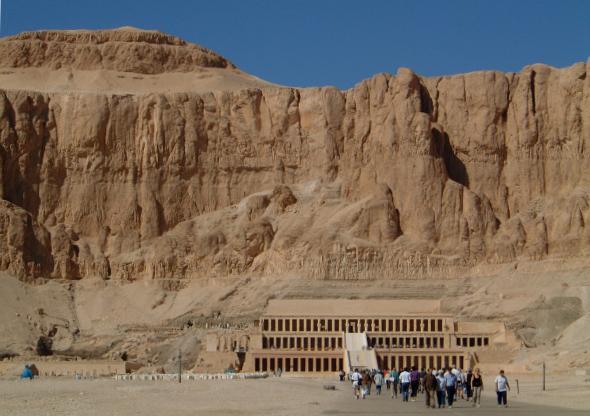
In general, the Egyptian authorities show taste and sensitivity
in caring for the remains in and around Luxor. Holes are repaired,
fallen pillars righted, and things of that sort, but it is always
clear what is "original" and what is "restoration". The
Temple of Hatshepsut is an exception to this admirable record.
It is quite clear that part of what you see in this photograph
of the temple has been rebuilt in the last 20 years. But it is
very difficult for non-experts to say, from inspection (and we went inside
the temple), how much of it is original. I think this is a great
pity, to say the least. The site is naturally impressive, and the
history of the temple is fascinating (it was mostly buried by sand
and rubble for at least two millennia before being
excavated and brought to light again in the 19th century).
There are many other remains on the west side of the Nile
across from Luxor, too many to visit in a week. This
is the Ramesseum, a temple ordered by Rameses II,
who died in about 1225 BC.
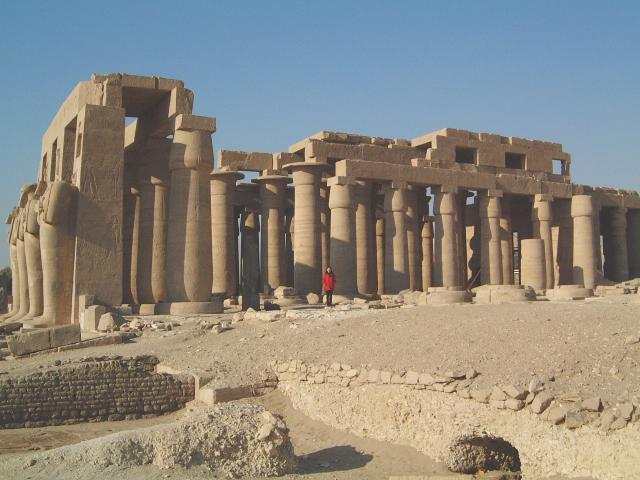
A huge statue of Rameses, seated, was destroyed at
some point in the following 3000 years. Its remains, some
of which seem to be missing, are said
to have inspired Shelley's poem "Ozymandias of Egypt".
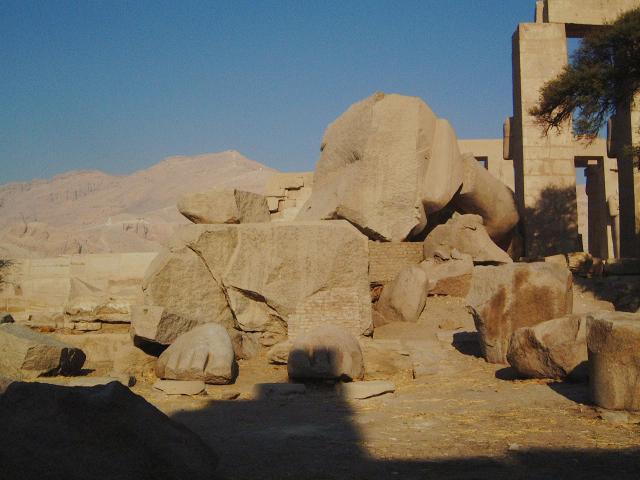
The poem is "inspired by", not a literal description of,
the remains.
"......... Near them on the sand
Half sunk, a shattered visage lies ... "
It's actually the upper torso as well as the head, but close enough.
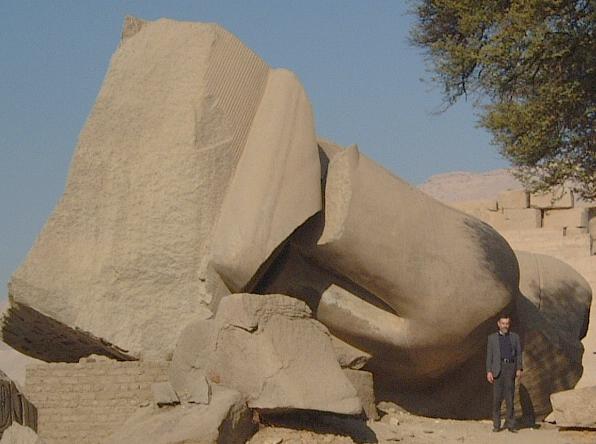
The remains are made of granite. It's hard to imagine how one could
destroy the statue without modern machinery - let alone
construct it in the first place.
Rameses II may have failed
to ensure that his image would last forever, but his
name, at least, is preserved, carved on the remains of his
statue:
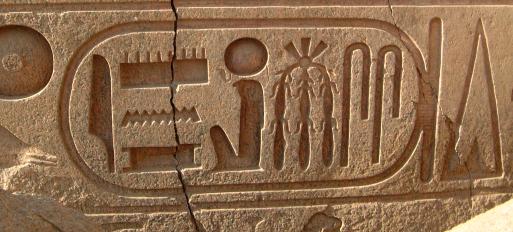
The cartouche containing the name is about 40 cm long, deeply
cut into the granite.





